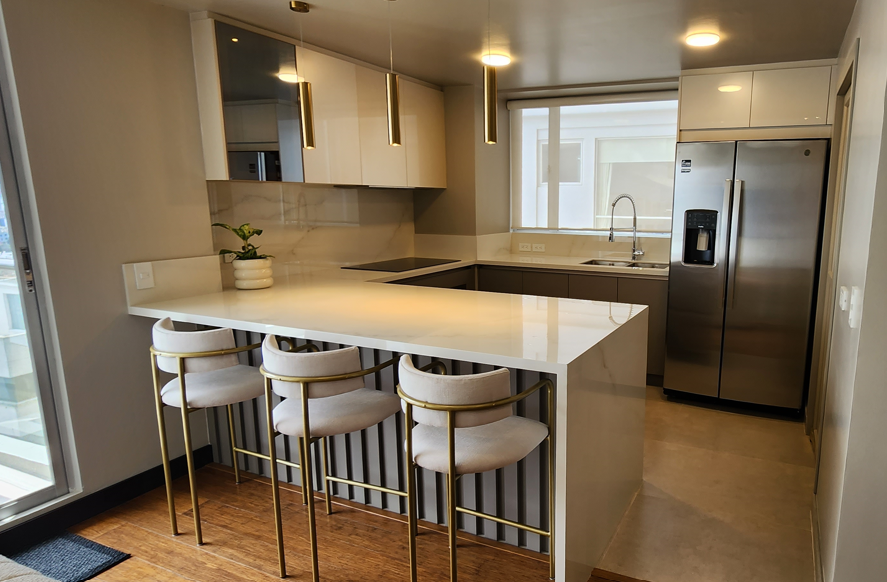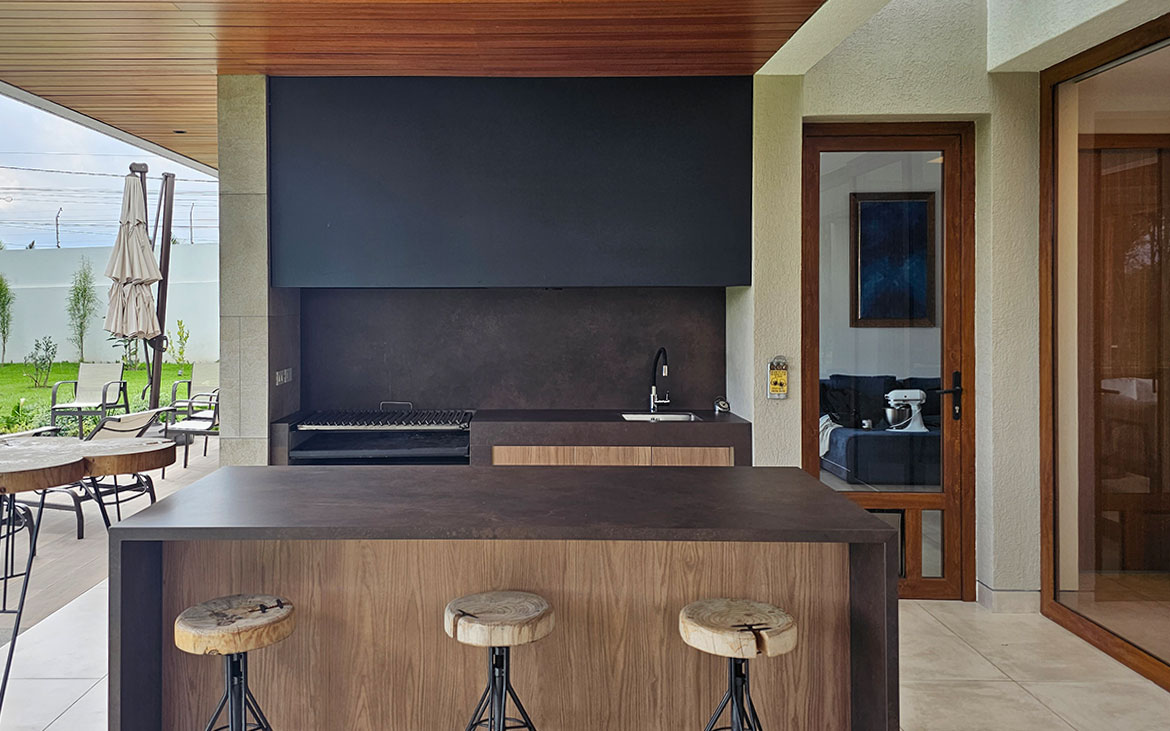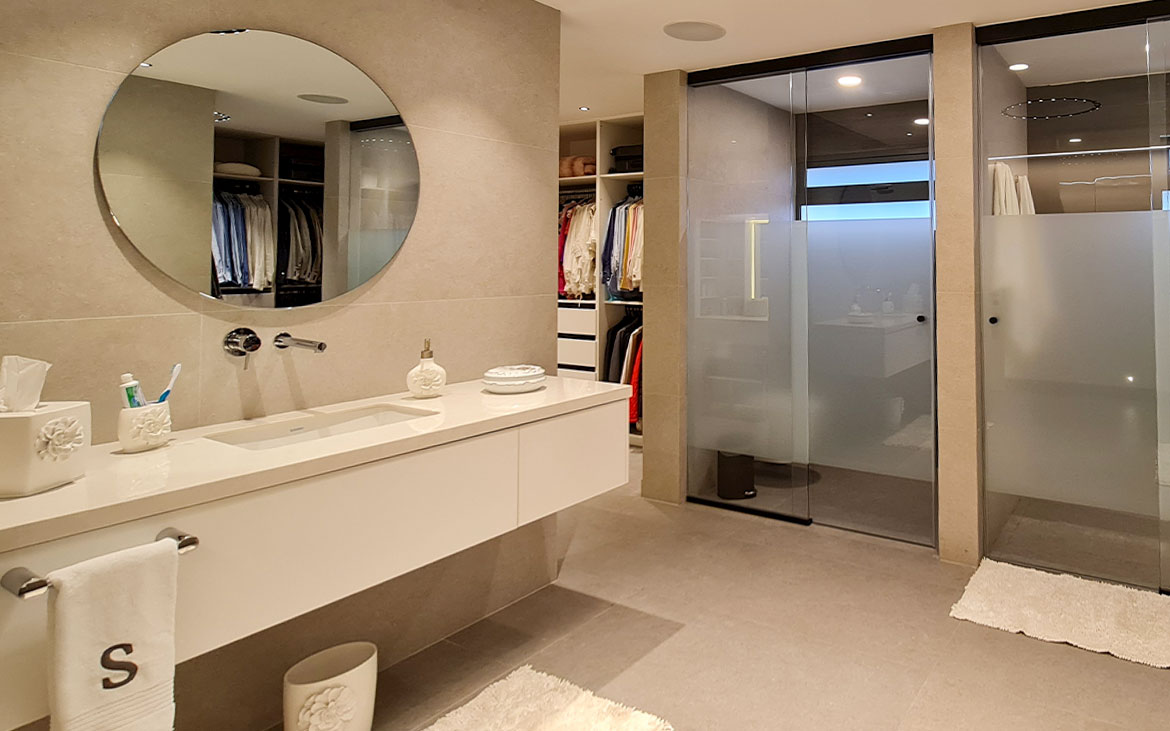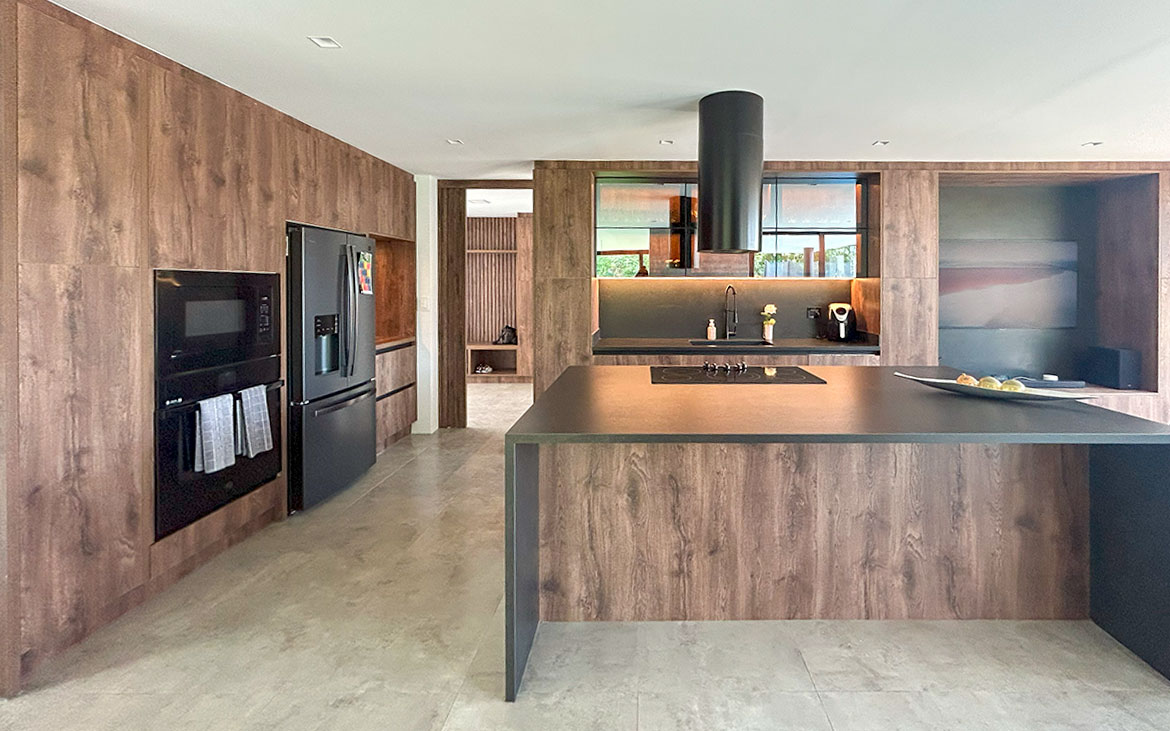Nowadays, kitchen suites have become a trend in modern home design. By combining the kitchen with other areas such as the living room or dining room, a fluid and versatile space is created that encourages social interaction and maximizes the use of available space.
However, designing kitchen suites presents unique challenges, such as efficient use of space, incorporating adequate natural lighting, and adequate ventilation.
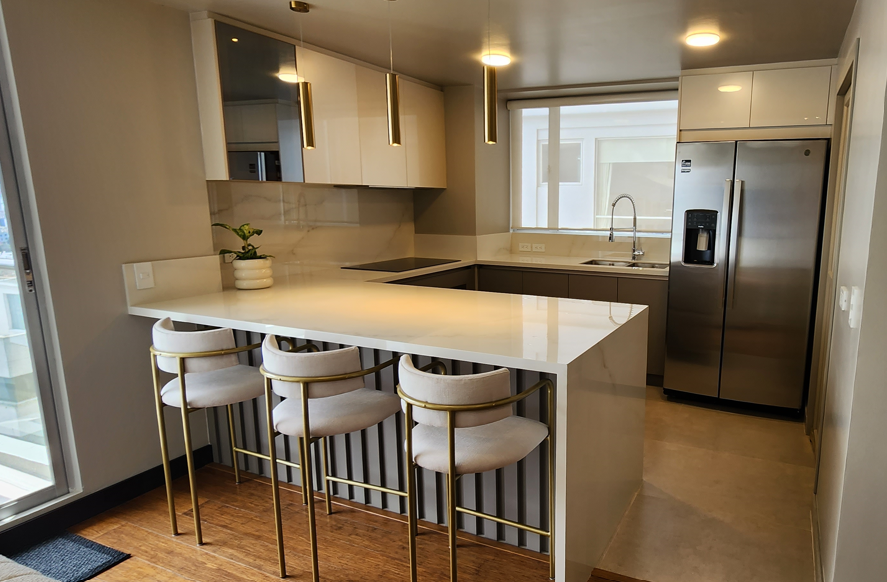
In this blog, we'll explore some key design tips to address these essential aspects and achieve a functional and aesthetically appealing kitchen suite.
1.Intelligent design for the use of space in suites:
For kitchen suites, space is a precious commodity and therefore every centimeter must be used to the maximum. Here are some ideas to achieve this:
a) Efficient distribution: Opt for a kitchen design that allows for fluid circulation and easy access to all key elements. The classic triangular layout, which places the stove, sink, and refrigerator in a triangle shape, is still an efficient and practical option.
b) Smart storage: Make the most of the walls and use tall cabinets to store less used items. Deep drawers and pot and pan organizers can help keep the space tidy and functional.
c) Multifunctional island: If space allows, consider adding a kitchen island. It can serve as an additional preparation area, storage space and a place to eat.
2.Natural lighting for a cozy atmosphere in kitchens:
Natural lighting can completely transform the atmosphere of kitchens in suites, making them warmer and more welcoming. Here are some suggestions to maximize the entry of natural light:
a) Strategically located windows: If possible, place large windows near the cooking zone and sink. These locations benefit both lighting and ventilation.
b) Reflective surfaces: Choose materials and colors that reflect light, such as light-colored countertops and cabinets. Mirrors can also be used to reflect natural light into darker areas.
c) Sliding or glass doors: If your kitchen suite opens onto a patio or garden, consider installing sliding or glass doors to allow light to flow freely and provide a closer connection to the outdoors.
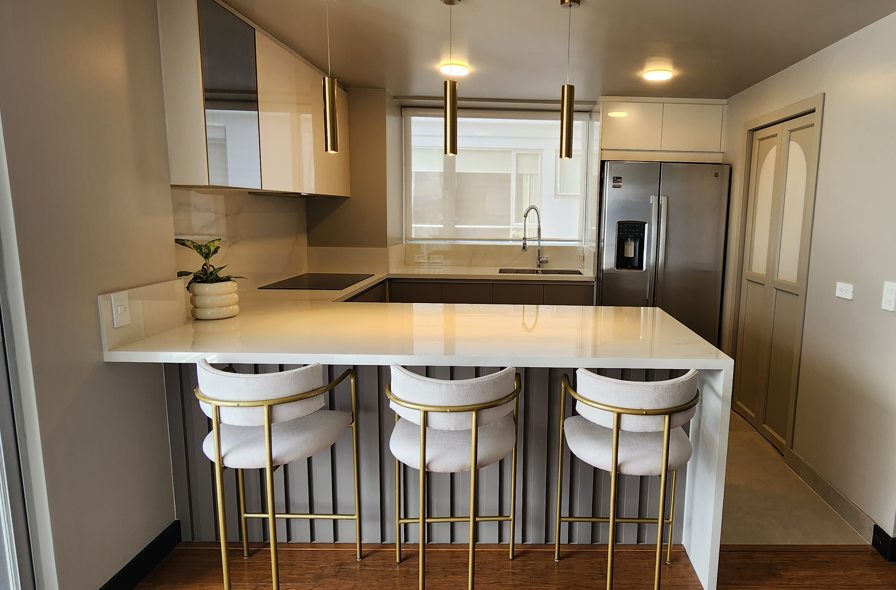
3. Adequate ventilation for a healthy environment in the suites:
Proper ventilation is crucial in any kitchen to eliminate odors, smoke and cooking fumes. In an en-suite kitchen, where the space is connected to other areas, ventilation becomes even more important to maintain a healthy and comfortable environment. Here are some recommendations to achieve effective ventilation:
a) Quality extractor hood: Install a powerful extractor hood over the stove to capture smoke and cooking odors. Make sure the hood is appropriately sized for the space.
b) Operable windows: If possible, opt for windows that can be opened to facilitate the circulation of fresh air. Cross ventilation can be especially helpful in eliminating lingering odors.
c) Mechanical ventilation system: Consider installing a mechanical ventilation system that connects to an exhaust duct to bring stale air outside.
In conclusion, designing kitchen suites that optimize space, take advantage of natural lighting and ensure adequate ventilation is an exciting and challenging task. By following the tips mentioned above, you can create a functional and beautiful kitchen that blends harmoniously with the rest of the suite space. Remember that the key is careful planning and adapting the design to your individual needs and preferences.
Good luck with your kitchen suite design project!

